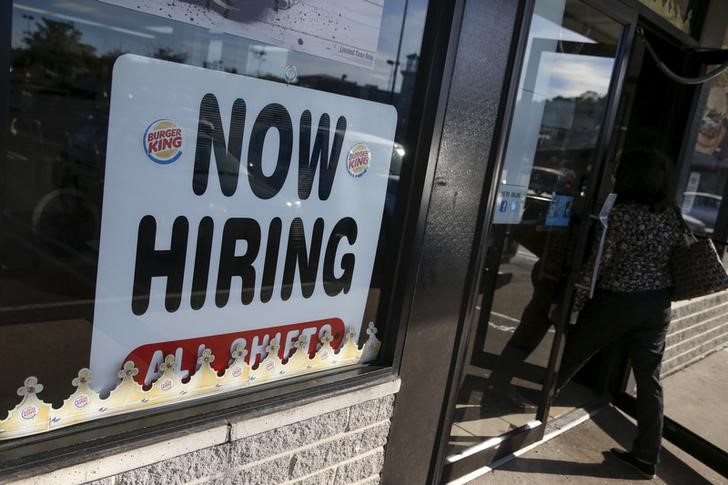By Geoffrey Smith
Investing.com -- The U.S. labor market finally stopped defying gravity in August, the number of vacancies dropping sharply as the surge in inflation overshadowed the outlook for the economy, prompting employers to scale back their hiring plans.
The Labor Department said total vacancies fell by over 1 million in August to 10.053 million, from a July number that was also revised down by nearly 70,000 to 11.170 million. The number, which was well below analysts' expectations for a total of around 10.775 million, was the lowest in over a year, and represented the biggest monthly decline since the early stages of the pandemic in April 2020.
"This is the first official indicator to point unambiguously, if not necessarily reliably, to a clear slowing in labor demand," said Ian Shepherdson, chief economist with Pantheon Macroeconomics, in a note to clients.
Financial markets took the news as an argument for the Federal Reserve to stop raising interest rates aggressively, inasmuch as it corroborates other evidence of an increasingly broad and clear slowdown in the U.S. economy.
The yield on the benchmark 10-Year U.S. Treasury note fell 9 basis points to 3.66%, a two-week low, while the dollar index, which tracks the greenback against a basket of six developed economy currencies, fell around a quarter point to 110.65. The S&P 500 meanwhile, rose 2.8%, while the Dow Jones Industrial Average and Nasdaq Composite rose 2.5% and 3.3% respectively.
Daniel Zhao, chief economist with Glassdoor, tweeted that the decline in job openings "was across the board, hitting most industries," although other items of the report, such as the so-called 'quit rate' and other separations, were largely unchanged. While they ticked up a little, Zhao said separations were still "well below pre-pandemic levels" and "not a red flag yet."
The numbers translated into an abrupt drop in the ratio of vacancies to job-seekers, a measure of labor market tightness that Federal Reserve officials have frequently referred to this year as they have warned of it overheating. There are now 1.61 jobs available for every registered unemployed person, down from 1.97 in July.
There are now 1.61 jobs available for every registered unemployed person, down from 1.97 in July. But while that is still a clear drop, it's still well above what was normal before the pandemic, according to Harvard professor and Peterson Institute senior fellow Jason Furman.
"The labor market went from very, very tight to very tight," Furman tweeted.
The numbers are the first of a series of sensitive data this week from a labor market whose strength this year has been one of the cardinal factors driving interest rates higher. They'll be followed on Wednesday by ADP (NASDAQ:ADP)'s report on private-sector hiring in September, which will in turn be followed by the government's labor market report on Friday. Analysts expect the pace of hiring to have moderated further last month, but the 250,000 consensus for nonfarm payroll growth is still well above what was normal before the pandemic.
